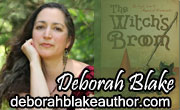Pagan Paths
The morning sun rising in the east calls to the Bright Youth in me, and the Bright Youth responds. The full moon calls to the Muse, and the waning and dark moon to the Dark Maiden who is a part of me. The earth I touch with my fingers calls to the Mother, in both her guises, Nurturing and Devouring. The bright green shoots rising from the earth and the green leaves on the trees on my street in the spring, these call to the Stag King, while the red leaves fallen to the earth in the autumn call to the Dying God. The spring storm that rises up suddenly in the west calls to the Storm King. The night sky, the dark space between the stars, calls to Mother Night, my death come to make peace. The gods-without call and the gods-within respond.
Jungian Pagan Practice, Part 5: Listening to the silence
When I lean over the chasm of myself,
It seems my God is dark,
and like a web made of a hundred roots
that drink in silence.
I know that my trunk grew from this ferment,
But more I don’t know,
because my branches rest in deep silence,
stirred only by the wind.
– Rainer Marie Rilke
In Jungian Neo-Paganism, divinity is experienced as both God and Goddess, Son and Mother, Seed and Womb. These correspond to Creation and Abyss, Form and Depth, Consciousness and Unconscious -- as well as Word and Silence. Contrary to our Western way of thinking, the Womb or Abyss not mere absence or void; it is something in itself. It is the undifferentiated source of Creation. It is the pregnant darkness of the Unconscious. It is the Dark Goddess from which the Son/Sun emerges.
Similarly, silence is more than the absence of sound; it is something that can be listened to. This is Emerson's "wise silence" which he equates with the divine whole. When we listen to the silence, we are listening to the Unconscious, to the Dark Goddess.
The first thing you will notice which you try to listen to the silence, is that it is not, in fact, silent. No matter where you are, there are always ambient noises. There are cars that can be heard outside. Inside, the air conditioner may turn on and off. Outside, insects my buzz around you. People around you may cough or sneeze. Even in a deep cave in the earth by yourself, you can hear the sound of your own heart. When we talk about silent practice, we are not talking about an external silence, but an internal one. This is the silence which comes when the internal “Talking Self” is quiet, listening instead of talking.
Listening to this internal silence is not the same as not being quiet or trying not to think. Listening to the silence is an activity. It means trying to make the part of yourself that normally talks in your head listening, instead of talk. It means attending to the space created by the absence of internal monologue. It means drawing your inner attention to “the place where the words come from” (to borrow a Quaker phrase).
As you try to listen to the silence, eventually you will find your mind wandering. When you do, redirect your attention back to the silence. The goal is not to suppress the flow of your thoughts, or even to rise above it, as in most Buddhist sitting meditation. Rather than “rising above” your consciousness, try to go deeper, to dive below your thoughts, so to speak. Not to transcend, but to immerse yourself. These water metaphors are intentional, since the Goddess is imagined as the watery womb of the Unconscious. Jung wrote, "Our unconscious hides living water."
If it is helpful, you can use the following metaphor to redirect your thoughts. Imagine diving into a dark pool and then slowing floating to the top. By drawing youy attention to the inner silence and quieting the Talking Self, you are diving into the metaphorical dark pool of your unconscious. As images and thoughts began to form again, you are floating back to the metaphorical surface. When you become self-conscious and realize that you have lost the attentiveness to the silence, then you have broken the surface of the metaphorical pool and breathed again the air of consciousness. The longer you can maintain your attentiveness to the silence, the deeper you can descend into your unconscious. But know that, no matter how deep you dive, it is inevitable that you will float to the surface. (Note how this process mirror's the Hero's Journey described by Jung's disciple, Joseph Campbell.)

Another thing to remember is that the images and thoughts that arise unbidden before becoming self-conscious again are significant in themselves. Far from being a failure of your practice, they are the point of it. These seemingly random thoughts are expressions of your unconscious which you should attend to before immersing yourself into the pool of unconsciousness again. The water metaphor places both the silence and the emergent thoughts into their proper perspective. You cannot remain in the silence, any more than you can stay forever under the water. You must rise naturally to the surface and breathe again. And then you can dive again, deeper and deeper each time.
Comments
-
Please login first in order for you to submit comments




















